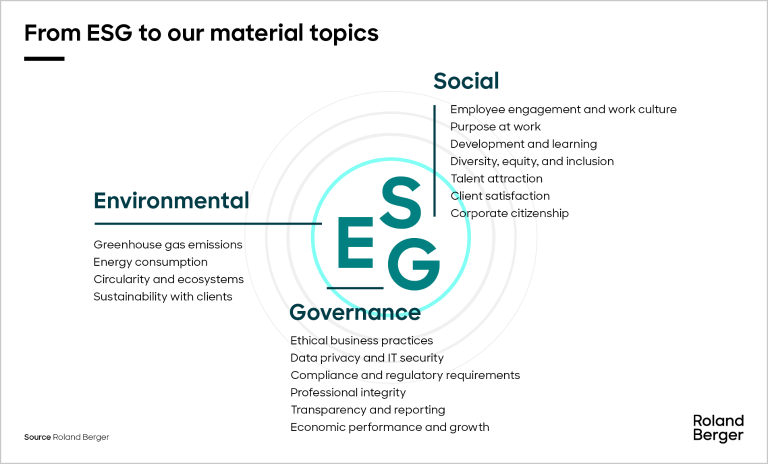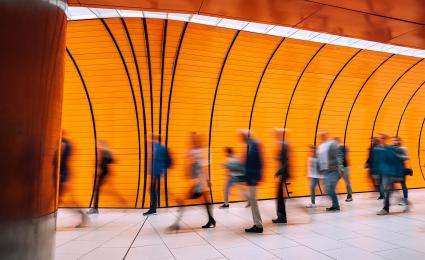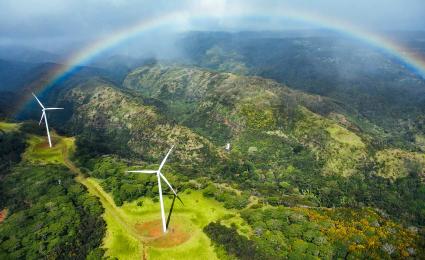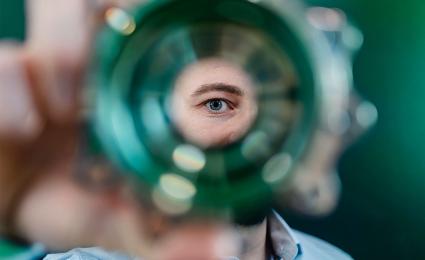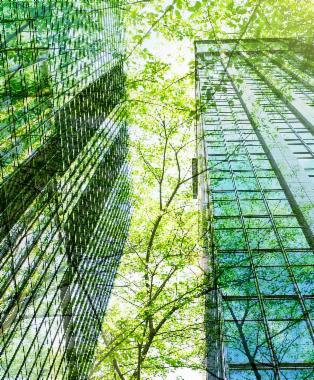Our employees are at the heart of everything we do. We create an inclusive, empathetic and entrepreneurial environment that allows them to grow and excel.


Our sustainability commitment
Act for impact: Sustainability at Roland Berger
It’s time to act on sustainability. Today’s volatile world, urgent climate crisis and ongoing struggle to reduce resource consumption call for good judgment and bold decisions. All stakeholders – especially the business world – must unite and cooperate if we are to meet the targets of the Paris Agreement. As strategy consultants, we at Roland Berger have a major part to play in this process. It is our duty to help organizations in all sectors and industries open up pathways to competitiveness in a decarbonized future.
But sustainability begins at home. That's why we've set ourselves the target to achieve net-zero emissions by 2040 - a target that is validated by the Science Based Targets initiative (SBTi) and one of the most ambitious ones in our industry.
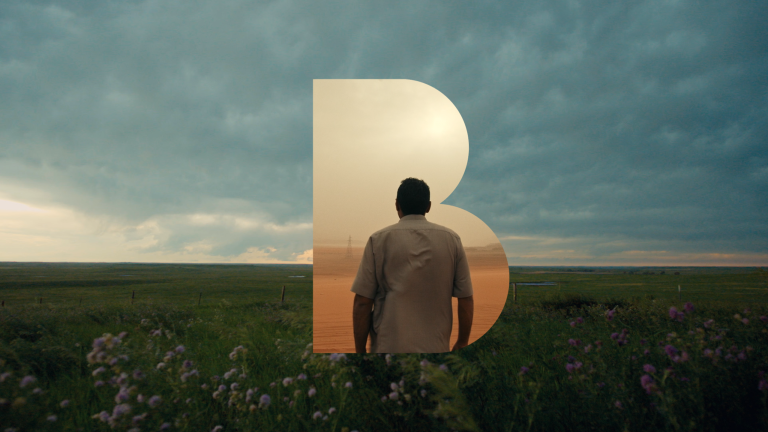
Our ESG strategy
As a strategy consulting firm, part of our role is to lead the way by means of innovation and cross-stakeholder collaboration. We take a holistic approach to our own sustainable development by applying the ESG (environmental, social, governance) framework to our corporate strategy and everything we do as a firm. The ESG criteria are also an essential part of our business model, as we facilitate our clients’ own sustainability transition into the future.
Our vision?
To secure sustainable growth by balancing economic, environmental and societal challenges.
Explore our ESG report to find out more about how Roland Berger addresses environmental, social and governance topics.
Our material topics
To build an ESG strategy, we first identified, assessed and prioritized all environmental, social and governance topics relevant for our firm in 2022. This structured process involved our management executives, clients and specialists in materiality assessments. We consolidated the results, bundling the 17 material topics into four main areas of impact (in 2023 we re-clustered into three areas of impact), as shown in our materiality matrix. In 2024 we carried out a new CSRD materiality assessment, to be published in our next ESG report.
A stakeholder perspective
Stakeholder engagement plays a pivotal role in our success as a consulting firm. Our stakeholders include current and future employees, clients, suppliers and society as a whole. We recognize the importance of engaging with each of these parties and listening to their needs and concerns. Their voices form a vital part of our decision-making and the cornerstone of our growth as a business. By hearing and understanding them, we can create an ecosystem where collaboration thrives – and where the best outcomes for all are possible.
Roland Berger ESG Report 2023
![{[downloads[language].preview]}](https://www.rolandberger.com/publications/publication_image/roland_berger_24_2467_esg_report_2023_download_cover2_download_preview.jpg)
In our ESG Report, we disclose our key ESG performance indicators for 2023 and show of the most relevant sustainability topics for Roland Berger.
Our sustainability commitment
![{[downloads[language].preview]}](https://www.rolandberger.com/publications/publication_image/large_roland_berger_ins_1184_sustainability_commitment_dt_download_preview.jpg)
At Roland Berger, we recognize the importance of sustainability as a holistic concept and our responsibility to manage and minimize our impact. You can find this translated into our sustainable principle that guide us in our daily business and govern our sustainability actions.


